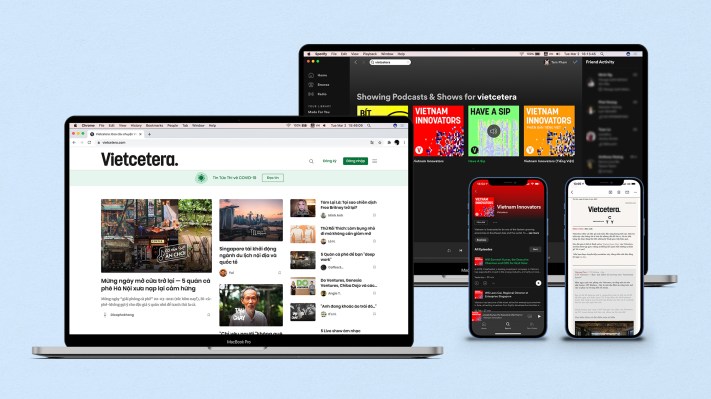How to Assess Culture-Fit During Recruitment
Culture, is more often than not, a conundrum. This is especially so when it comes to corporate culture. There are […] The post How to Assess Culture-Fit During Recruitment appeared first on ReadWrite.

Culture, is more often than not, a conundrum. This is especially so when it comes to corporate culture. There are many questions when we think about corporate culture (also called organizational culture). Have you asked, “What is my organization’s culture; how can I understand it, and how can I measure it?” Yes, the confusion continues.
And what’s more, this is compounded even more so when as an HR professional, you need to hire candidates that are a good culture fit with your organization and the job role. This is why, without further ado, we’ll talk about how to assess culture fit and compatibility during recruitment. in this article.
What is culture-fit?
Culture fit, also called Cultural fit, is the process of screening potential candidates to not only determine what cultural impact they would have on the organization but also to ensure that there is an alignment of values, beliefs, attitudes, and behavior between the organization and the candidate. While this may sound simple, there are several complexities that arise when we talk about cultural fit.
Culture-fit is not a one-way street.
Just as organizations evaluate candidates for culture fit, candidates are screening potential employers for culture fit too! This is especially the case with Millennials and Gen Z employees. Corporate or business culture consists of the entire business ecosystem, including employees, team dynamics, technology, systems, premises, tools, and so on — in fact, everything employees need to do their work effectively. So, you see, culture fit is a complex concept.
Culture-fit does not mean hiring identical people.
Also, culture-fit does not mean that employers should discriminate against diversity. A great company culture embraces diversity in all its forms. To sum up, diversity and culture fit to ensure that employees thrive when they feel connected to the values and nuances of the business.
Why culture fit is important
While culture fit is difficult to define and even more difficult to put into words, most HR professionals and business leaders agree that it is extremely important. Around 90% of employers say it is very important to find candidates who are a good cultural fit. There are several and varied reasons for this. Some of them are:
Retention of staff: Culture fit is the single most crucial factor when it comes to employee retention. Employees dissatisfied with their company culture are likely to either remain absent for long stretches or then quit the company. A dissatisfied employee can also result in the company culture turning toxic, adversely affecting other employees. About 73% of professionals have left a job because they were a poor cultural fit with their organizations. Engagement of employees: When employees’ values and beliefs align with those of the company in which they work, they are more likely to be engaged, efficient, and effective. They are also more likely to be committed to the company and go above and beyond their job roles. This means that employee engagement is critical to business success. This also means that cultural fit and employee satisfaction are positively correlated. Around 46% of employees say that company culture is essential for them. Enhanced productivity and performance: Employees working for a company with a strong, healthy, and distinctive culture are more likely to be productive and happy. They are also more likely to perform better and more consistently. Poor and ill-defined company culture can drain productivity and result in unhappy and unproductive employees. Cohesive workforce: A company with the same cohesive values is more likely to achieve its organizational goals than a company that does not have the same values as its employees. This principle applies to different teams within an organization as well. So, teams with disjointed priorities find it challenging to achieve their goals. Also, personal and professional differences are much easier to resolve when building a culture-fit team where all employees share the same or similar values as their fellow team members. Open communication: When corporate and personal values are aligned, employees in such organizations find it easier to communicate. It has been noticed that organizations with a strong culture believe in and practice open communication and collaborative working processes and systems.Employees who share the same values as their companies are happier, more committed
Employees who share the same values as their companies are happier, more committed, experience greater job satisfaction, perform better, and are likelier to stay with their organizations. This is especially important in today’s business climate, where employees want more than just a paycheck at the end of the month. They want job satisfaction, role fulfillment, effective relationships, and much more. This is more so the case with Gen Z employees.
In a competitive and global recruitment climate, when companies are vying for the best candidates, having a strong, distinctive, and healthy corporate culture with a good culture-fit can mean the difference between business success and failure!
How you can assess culture fit during recruitment
Culture fit is becoming increasingly popular as a hiring paradigm among HR and resourcing professionals worldwide. Earlier recruitment professionals relied on gut feeling and skills evaluation without checking for culture fit.
HR professionals have realized the value of a good culture-fit
However, that has changed, with HR professionals realizing that a good culture fit can ensure that your employees are happier…and happier employees are more productive and more likely to stay with the organization. So, retaining employees through culture fit has become the new norm. Therefore, culture fit is becoming one of the most popular and essential recruiting criteria to evaluate in the process of applying for a new job.
However, Evaluating for culture fit can be difficult and backfire if not done right. Culture fit, however, is difficult to measure and quantify. This is where the right culture-fit assessment enters the picture. If you use the right culture-fit assessment, you can effectively evaluate your candidates for culture-fit without too many doubts.
The right culture-fit assessment will gather data on current employees to determine which data points correlate well with employee success. Increasingly, culture-fit assessments are becoming a key and vital factor in hiring.
You’ll want a good culture-fit assessment because it can practically eliminate bias.
Determining if a candidate is a good culture fit is subjective and open to interpretation by different recruiters. Moreover, managers can often be confused as to what a good cultural fit means. This may mean they hire candidates who are like themselves or who they like. This is why a culture-fit assessment is vital to administer to all candidates.
There are several companies that offer assessments in this space, and PMaps is one of them. We’ll now take a detailed look at the PMaps Culture Assessment.
PMaps Culture Assessment
The PMaps Culture Assessment can help you identify the right candidates based on your culture and values. PMaps can also help you identify your core values before allowing you to administer the Culture Assessment. This Culture Assessment can be completely customized for your industry and for your organization.
The PMaps Culture Assessment helps you measure and gauge the alignment of your employees with your organizational culture and values. This enables you to hire only those candidates that will be a good cultural fit in your organization. When a candidate is a good cultural fit with your organization, they are less likely to leave, which directly impacts reducing your attrition rate.
The PMaps Culture Assessment assesses the culture framework of your organization. PMaps does so by conducting original research in your organization, using research methods such as Focus Groups. After PMaps learns the core values that are important to your organization, they create a customized Culture Assessment for your company, keeping those core values in mind.
The PMaps Culture Assessment consists of both visual and statement-based questions and directly measures whether your candidates are a good cultural fit in your organization. The PMaps Culture Assessment is entirely customizable depending on your core values. It includes a set of 3 to 5 questions for each core value.
However, the test time and number of questions can vary depending on the competencies measured for each organization if you and your organization prefer reduced test time that is also possible. Moreover, the benchmarks of the Culture Assessment are also customizable.
Each Culture Assessment for different companies is different because the core values of each organization are different. The PMaps Culture Assessment is completely customizable and can be combined with other Pre-Hire Assessments to give you a complete and composite picture of the candidate you are planning on hiring. The PMaps Culture Assessment is customizable across industries and across organizations.
If your organization does not have its core values clearly defined, PMaps can customize its Culture Assessment for that as well. In such a case, PMaps can propose that you use their own Culture Assessment that will be tweaked for this purpose.
You will want to use several types of culture-fit assessments when interviewing
Research-based: Understands how important your core values can be. Identify and ideate your core values. Do this through research, such as focus groups with varied employees in your organization. If your organization is already clear about its core values can create a Culture-Fit Assessment that is specific to your organization. Combination of objective and subjective questions. Combines option-based assessment questions, which are accurate, with response-based assessment questions, which are subjective. Some questions are also voice-based and subjective. This ensures that candidates cannot fake their answers, and you get an overall picture of your candidate when it comes to the core values they believe in. Measures keywords in responses Determines whether your candidates are a good fit with your organization by measuring keywords in reactions. Once these keywords are present in responses, your organization will receive an overall score for a particular candidate, which will let you know whether and how much of a cultural fit your candidate is. Completely customizable. Think about the core values of your organization. Are they Perseverance, Growth Mindset, Founder Mindset, Organizational Citizenship, and Integrity? These can be directly measured and evaluated for these core values with suitable and customized questions. You want greater retention of employees, lowered attrition, and increased productivity. Efficiently evaluates the right cultural-fit candidates. You want those who will make for a good fit with your organization. The assessment will evaluate candidates by giving them an overall score, which will then tell you whether that particular candidate would be a good cultural fit. Detailed reports. Make sure your HR department and interviewers have a detailed and clear report about your candidate. This will ensure that there is no ambiguity regarding the result of the assessment. Visual-based. Have some of your questions in the form of visuals. This makes the test fun, interactive, and engaging. It also means that the test appeals to candidates from different cultures and age groups, especially Gen Z candidates.Keep organizational culture in mind when hiring
This has become very important in an increasingly competitive environment and labor market. If your candidates do not espouse your organizational values and cultural norms, chances are they will leave your organization or be unhappy until they leave.
Your Cultue-Fit Assessment can help you and your organization determine whether your candidates would be the right cultural fit with your organization. Moreover, it can be efficiently and effectively combined with other assessments to get an even better and a detailed picture.
Conclusion
Ensure that your hires are likely to stay with your organization in the long-term and also perform at their best and rise to leadership positions. Ensure that your hires are a good fit not just in terms of skills, but also in terms of culture.
You want the best Culture-fit possible. For assessment for your organization consider: [email protected], or get in touch through our website at www.pmapstest.com.
Featured Image Credit: Sora Shimazaki; Pexels; Thank you!
Pratisrutee Mishra
Content Writer at PMaps
Beginning at the age of 10 years old, Pratisrutee Mishra has had an immense interest in writing. The young, professional Gen-Z writer now holds an experience of 4+ years in SEO Content Development. Pratisrutee is an equally avid psychology learner and research aspirant at PMaps.

 Fransebas
Fransebas 
































.jpeg?trim=0,89,0,88&width=1200&height=800&crop=1200:800)